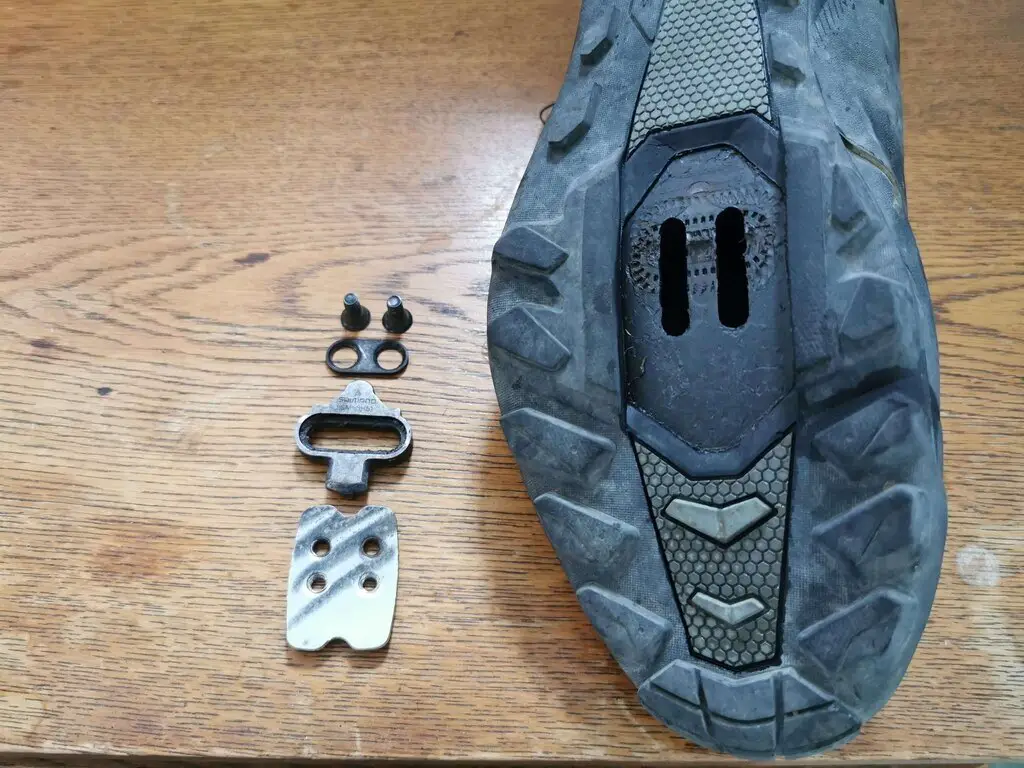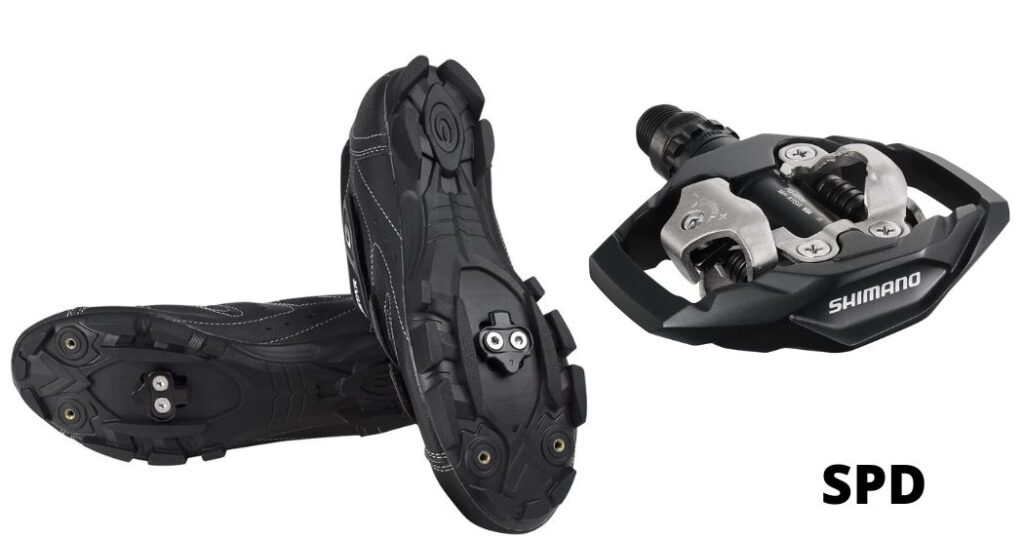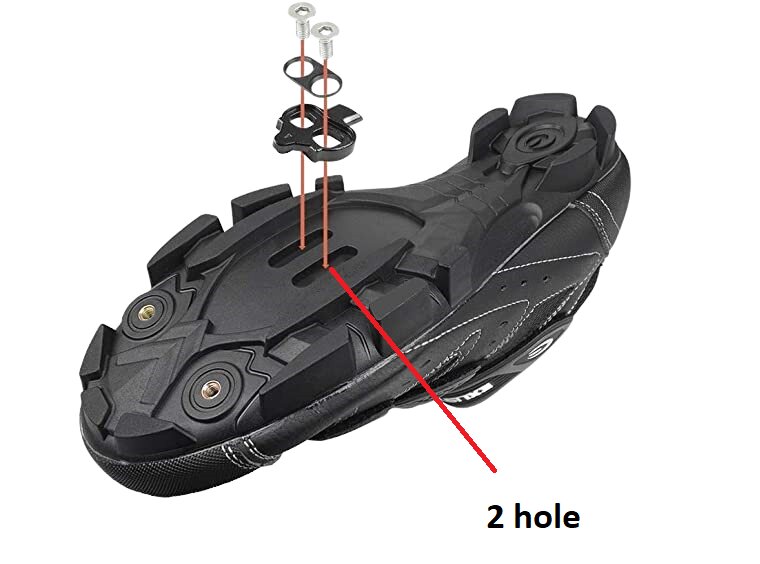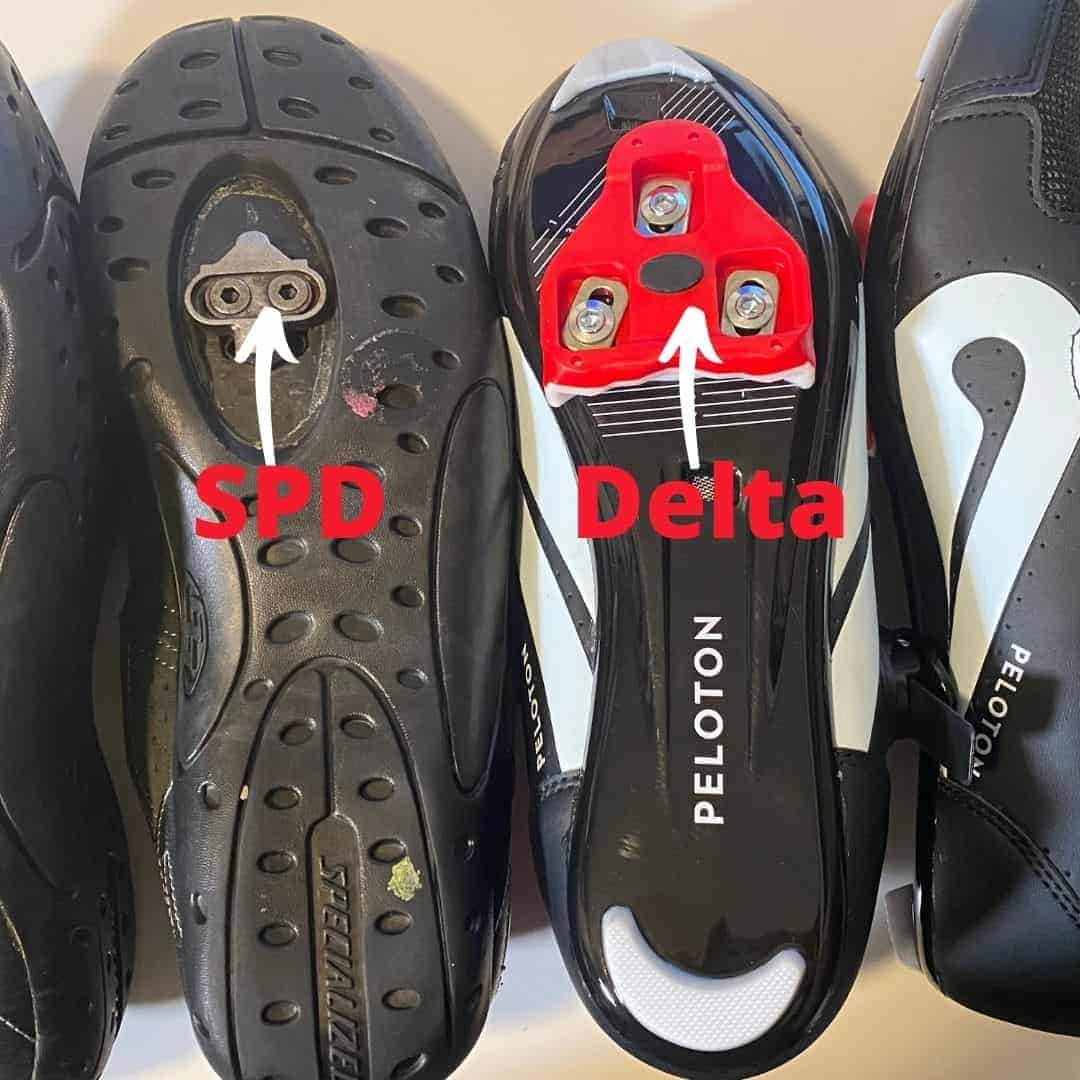Understanding the Difference Between Delta and SPD Cleats
When it comes to choosing the right clipless pedals for your cycling needs, two popular options stand out: Delta and SPD cleats. Both types of cleats have their own unique characteristics, advantages, and disadvantages. In this article, we will delve into the world of Delta vs SPD cleats, exploring the key differences between them and helping you make an informed decision for your next cycling adventure.
Delta cleats, also known as Look-style cleats, are a popular choice among road cyclists and triathletes. They are known for their ease of use, compatibility with a wide range of pedals, and secure connection. Delta cleats feature a three-bolt pattern and are designed to provide a stable platform for efficient power transfer.
On the other hand, SPD cleats, also known as Shimano Pedaling Dynamics cleats, are a favorite among mountain bikers and commuters. They are designed to provide improved power transfer, reduced weight, and increased durability. SPD cleats feature a two-bolt pattern and are known for their ease of entry and exit.
When deciding between Delta and SPD cleats, it’s essential to consider your riding style, pedal preferences, and personal comfort. Both types of cleats have their own unique benefits and drawbacks, and understanding these differences is crucial to making the right choice for your cycling needs.
In the next section, we will explore the factors to consider when choosing the best cleats for your riding style, including pedal platform, float, and tension. We will also discuss the benefits of each type of cleat for different types of riding, such as road biking, mountain biking, or commuting.
How to Choose the Best Cleats for Your Riding Style
When it comes to selecting the most suitable cleats for your riding style, there are several factors to consider. Pedal platform, float, and tension are just a few of the key elements that can affect your cycling performance and comfort. In this section, we will explore the benefits of each type of cleat for different types of riding, helping you make an informed decision when choosing between Delta and SPD cleats.
For road cyclists, Delta cleats are often the preferred choice due to their ease of use and compatibility with a wide range of pedals. The three-bolt pattern of Delta cleats provides a stable platform for efficient power transfer, making them ideal for high-performance riding. Additionally, Delta cleats offer a higher level of float, allowing for a more natural pedaling motion and reduced stress on the knees.
On the other hand, SPD cleats are a popular choice among mountain bikers and commuters due to their improved power transfer and reduced weight. The two-bolt pattern of SPD cleats provides a more secure connection and better mud clearance, making them ideal for off-road riding. SPD cleats also offer a lower level of float, which can be beneficial for riders who prefer a more precise pedaling motion.
When choosing between Delta and SPD cleats, it’s essential to consider your riding style and pedal preferences. If you’re a road cyclist who values ease of use and high-performance riding, Delta cleats may be the better choice. However, if you’re a mountain biker or commuter who requires improved power transfer and reduced weight, SPD cleats may be the way to go.
In addition to pedal platform, float, and tension, it’s also important to consider the compatibility of your cleats with your pedals and shoes. In the next section, we will take a closer look at Delta cleats, exploring their design, functionality, and benefits in more detail.
Delta Cleats: A Closer Look at the Popular Choice
Delta cleats are one of the most popular choices among cyclists, and for good reason. Their ease of use, compatibility with a wide range of pedals, and secure connection make them an ideal choice for many riders. In this section, we will take a closer look at the design, functionality, and benefits of Delta cleats, and explore why they are a popular choice among cyclists.
One of the key advantages of Delta cleats is their ease of use. The three-bolt pattern of Delta cleats makes them easy to install and adjust, and the cleats themselves are designed to provide a secure connection to the pedal. This makes them ideal for riders who are new to clipless pedals, or for those who want a hassle-free riding experience.
Another benefit of Delta cleats is their compatibility with a wide range of pedals. Delta cleats are designed to work with a variety of pedal systems, including Shimano, Look, and Time. This makes them a great choice for riders who want to be able to switch between different pedal systems, or for those who want to be able to use their cleats with different bikes.
In addition to their ease of use and compatibility, Delta cleats also offer a number of other benefits. They are designed to provide a secure connection to the pedal, which helps to prevent accidental release and ensures a safe riding experience. They also offer a high level of float, which allows for a more natural pedaling motion and helps to reduce stress on the knees.
Overall, Delta cleats are a popular choice among cyclists due to their ease of use, compatibility with a wide range of pedals, and secure connection. They are an ideal choice for riders who want a hassle-free riding experience, and for those who want to be able to switch between different pedal systems.
In the next section, we will take a closer look at SPD cleats, and explore their design, functionality, and benefits. We will also discuss the advantages of using SPD cleats, and explore why they are a popular choice among serious cyclists.
SPD Cleats: The Alternative Option for Serious Cyclists
SPD cleats are a popular choice among serious cyclists who demand high-performance and reliability from their clipless pedals. Designed to provide improved power transfer and reduced weight, SPD cleats are an excellent option for riders who want to take their cycling to the next level. In this section, we will take a closer look at the design, functionality, and benefits of SPD cleats, and explore why they are a popular choice among serious cyclists.
One of the key advantages of SPD cleats is their improved power transfer. The two-bolt pattern of SPD cleats provides a more secure connection to the pedal, which helps to reduce energy loss and improve pedaling efficiency. This makes them an ideal choice for riders who want to maximize their power output and achieve faster times.
Another benefit of SPD cleats is their reduced weight. SPD cleats are designed to be lightweight and compact, which makes them an excellent choice for riders who want to minimize their overall bike weight. This can be especially beneficial for riders who compete in events where every gram counts.
In addition to their improved power transfer and reduced weight, SPD cleats also offer a number of other benefits. They are designed to provide a more precise pedaling motion, which helps to reduce stress on the knees and improve overall comfort. They also offer a higher level of adjustability, which makes them an excellent choice for riders who want to fine-tune their pedal setup.
Overall, SPD cleats are a popular choice among serious cyclists due to their improved power transfer, reduced weight, and precise pedaling motion. They are an excellent option for riders who want to take their cycling to the next level and achieve faster times.
In the next section, we will use real-world examples to compare the performance of Delta and SPD cleats in different riding scenarios. We will discuss the experiences of cyclists who have used both types of cleats and provide insights into their preferences.
Real-World Examples: Comparing Delta and SPD Cleats in Action
In this section, we will use real-world examples to compare the performance of Delta and SPD cleats in different riding scenarios. We will discuss the experiences of cyclists who have used both types of cleats and provide insights into their preferences.
One example of a cyclist who has used both Delta and SPD cleats is a professional road cyclist who competes in events such as the Tour de France. This cyclist prefers to use Delta cleats for their ease of use and compatibility with a wide range of pedals. However, they also use SPD cleats for certain events where they need to maximize their power output and achieve faster times.
Another example is a mountain biker who uses SPD cleats for their improved power transfer and reduced weight. This cyclist prefers the precise pedaling motion and adjustability of SPD cleats, which allows them to fine-tune their pedal setup for optimal performance.
A commuter who uses their bike for daily transportation also prefers to use Delta cleats for their ease of use and compatibility with a wide range of pedals. However, they also appreciate the improved power transfer and reduced weight of SPD cleats, which makes them a great option for longer rides.
These examples illustrate the different preferences and needs of cyclists when it comes to choosing between Delta and SPD cleats. While some cyclists prefer the ease of use and compatibility of Delta cleats, others prefer the improved power transfer and reduced weight of SPD cleats.
In the next section, we will discuss the compatibility and interchangeability of Delta and SPD cleats with different types of pedals and shoes. We will also discuss the potential issues that can arise from mixing and matching different components.
Compatibility and Interchangeability: What You Need to Know
When it comes to choosing between Delta and SPD cleats, compatibility and interchangeability are important factors to consider. In this section, we will explain the compatibility and interchangeability of Delta and SPD cleats with different types of pedals and shoes, and discuss the potential issues that can arise from mixing and matching different components.
Delta cleats are compatible with a wide range of pedals, including Shimano, Look, and Time. They are also compatible with most cycling shoes, including road, mountain, and commuting shoes. However, it’s essential to check the compatibility of your cleats with your pedals and shoes before making a purchase.
SPD cleats, on the other hand, are primarily designed for use with Shimano pedals. They are also compatible with some other pedal systems, but compatibility may vary depending on the specific pedal model. SPD cleats are also compatible with most cycling shoes, but may require a specific type of shoe with a recessed cleat pocket.
When mixing and matching different components, it’s essential to ensure compatibility to avoid any issues with performance or safety. For example, using Delta cleats with Shimano pedals may result in a less secure connection, which can lead to accidents or injuries.
To ensure compatibility and interchangeability, it’s recommended to check the manufacturer’s specifications and recommendations for your specific pedals and shoes. You can also consult with a professional bike mechanic or cycling expert for advice on choosing the right cleats for your cycling needs.
In the next section, we will provide step-by-step instructions on how to properly install and adjust your cleats for optimal performance and comfort. We will also offer tips on how to troubleshoot common issues and ensure a secure connection.
Tips for Installing and Adjusting Your Cleats
Proper installation and adjustment of your cleats is crucial for optimal performance and comfort. In this section, we will provide step-by-step instructions on how to properly install and adjust your cleats, as well as offer tips on how to troubleshoot common issues and ensure a secure connection.
Step 1: Choose the correct cleat position. The cleat position will depend on your riding style and personal preference. For most riders, a neutral cleat position is recommended, with the cleat centered over the pedal spindle.
Step 2: Install the cleats. Follow the manufacturer’s instructions for installing the cleats on your shoes. Make sure the cleats are securely attached and the screws are tightened evenly.
Step 3: Adjust the cleat tension. The cleat tension will depend on your riding style and personal preference. For most riders, a moderate cleat tension is recommended, with the cleat providing a secure connection without being too tight.
Step 4: Check the cleat alignment. Make sure the cleats are properly aligned with the pedals. If the cleats are not aligned correctly, it can cause discomfort and affect performance.
Tips for troubleshooting common issues:
If you experience discomfort or pain while riding, check the cleat position and tension. Make sure the cleats are properly aligned and the tension is not too tight.
If you experience difficulty clipping in or out of the pedals, check the cleat condition and cleanliness. Make sure the cleats are free of dirt and debris, and the pedals are properly lubricated.
By following these steps and tips, you can ensure a secure connection and optimal performance from your cleats. Remember to always follow the manufacturer’s instructions and take the time to properly install and adjust your cleats.
In the next section, we will summarize the key points of the article and reiterate the importance of choosing the right cleats for your cycling needs.
Conclusion: Making the Right Choice for Your Cycling Needs
In conclusion, choosing the right cleats for your cycling needs is a crucial decision that can affect your performance, comfort, and overall riding experience. In this article, we have discussed the key differences between Delta and SPD cleats, including their design, functionality, and benefits. We have also provided tips and advice on how to select the most suitable cleats for your riding style, including factors such as pedal platform, float, and tension.
When deciding between Delta and SPD cleats, it’s essential to consider your riding style, pedal preferences, and personal comfort. Delta cleats are a popular choice among road cyclists and commuters, offering ease of use and compatibility with a wide range of pedals. SPD cleats, on the other hand, are a favorite among mountain bikers and serious cyclists, providing improved power transfer and reduced weight.
Ultimately, the choice between Delta and SPD cleats depends on your individual needs and preferences. By considering the factors discussed in this article, you can make an informed decision and choose the right cleats for your cycling needs.
Remember, choosing the right cleats is just the first step in optimizing your cycling performance. Proper installation and adjustment of your cleats, as well as regular maintenance and upkeep, are also crucial for ensuring a secure connection and optimal performance.
By following the tips and advice provided in this article, you can ensure a comfortable and efficient ride, and take your cycling to the next level.








